Related Research Articles

A machine gun (MG) is a fully automatic, rifled auto-loading firearm designed for sustained direct fire with rifle cartridges. Other automatic firearms such as automatic shotguns and automatic rifles are typically designed more for firing short bursts rather than continuous firepower and are not considered true machine guns. Submachine guns fire handgun cartridges rather than rifle cartridges, therefore they are not considered machine guns, while automatic firearms of 20 mm (0.79 in) caliber or more are classified as autocannons rather than machine guns.

Emile Berliner originally Emil Berliner, was a German-American inventor. He is best known for inventing the lateral-cut flat disc record used with a gramophone. He founded the United States Gramophone Company in 1894; The Gramophone Company in London, England, in 1897; Deutsche Grammophon in Hanover, Germany, in 1898; and Berliner Gram-o-phone Company of Canada in Montreal in 1899. Berliner also invented what was probably the first radial aircraft engine (1908), a helicopter (1919), and acoustical tiles (1920s).

Antonio Santi Giuseppe Meucci was an Italian inventor and an associate of Giuseppe Garibaldi, a major political figure in the history of Italy. Meucci is best known for developing a voice-communication apparatus that several sources credit as the first telephone.

Granville Tailer Woods was an American inventor who held more than 50 patents in the United States. He was the first African American mechanical and electrical engineer after the Civil War. Self-taught, he concentrated most of his work on trains and streetcars. One of his inventions is the Synchronous Multiplex Railway Telegraph, a variation of the induction telegraph that relied on ambient static electricity from existing telegraph lines to send messages between train stations and moving trains.
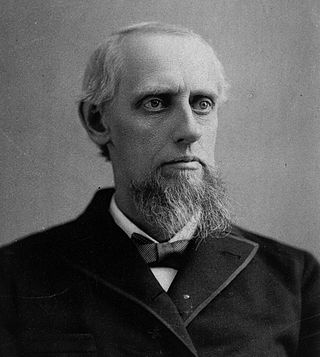
Amos Emerson Dolbear was an American physicist and inventor. Dolbear researched electrical spark conversion into sound waves and electrical impulses. He was a professor at University of Kentucky in Lexington from 1868 until 1874. In 1874 he became the chair of the physics department at Tufts University in Medford, Massachusetts. He is known for his 1882 invention of a system for transmitting telegraph signals without wires. In 1899 his patent for it was purchased in an unsuccessful attempt to interfere with Guglielmo Marconi's wireless telegraphy patents in the United States.

Tolbert Lanston was the American founder of Monotype, inventing a mechanical typesetting system patented in 1887 and the first hot metal typesetter a few years later.

Martinus Sieveking was a Dutch virtuoso pianist, composer, teacher and inventor born in Amsterdam. Also known as Martin Sieveking, he performed as a soloist around Europe] and the United States during his active career and taught in France and the U.S. after he retired from performing. He is sometimes referred to as The Flying Dutchman due to his Dutch heritage and extremely flighty nature. At the peak of his career, he was pronounced by the New York and Boston critics as one of the four greatest living pianists of that time along with Ignace Paderewski, Moriz Rosenthal and Rafael Joseffy.
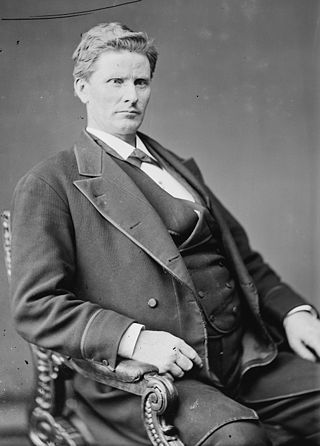
Charles William Jones was an American attorney and politician. A Democrat, he served as a United States Senator from Florida from 1875 to 1887. Jones abandoned his seat near the end of his second term, and it remained vacant for a year until a successor was elected. Jones was later diagnosed as mentally ill, and was hospitalized at a Dearborn, Michigan asylum for seven years before his death.

A lazy Susan is a turntable placed on a table or countertop to aid in distributing food. Lazy Susans may be made from a variety of materials but are usually glass, wood, or plastic. They are circular and placed in the centre of a table to share dishes easily among diners. Owing to the nature of Chinese cuisine, especially dim sum, they are common at formal Chinese restaurants both in mainland China and abroad. In Chinese, they are known as 餐桌转盘 or "dinner-table turntables".

The Vermont State Auditor of Accounts is one of six constitutional officers in Vermont, elected statewide every two years. The Office provides an independent and objective assessment of Vermont's governmental operations.
Francis Ramacciotti was an Grand Duchy of Tuscany-born inventor who founded a major piano string manufacturer in the United States.

A dumbwaiter is a small freight elevator or lift intended to carry food. Dumbwaiters found within modern structures, including both commercial, public and private buildings, are often connected between multiple floors. When installed in restaurants, schools, hospitals, retirement homes or private homes, they generally terminate in a kitchen.

A barber chair is a chair for customers of a barber.

The firm S. H. Couch, often known as simply Couch, was a Quincy, Massachusetts, manufacturing company founded circa 1901 in Boston after the dissolution of Whitman & Couch, a partnership, and a second entity known as Couch & Seeley. S. H. Couch launched during and participated in the turn of the century Independent Telephone Movement which ensued after the expiration of the foundational Bell telephone patents in 1894. The company specialized in electrical devices including telephones, intercoms, and fire alarm systems. S. H. Couch had offices in Boston and in Chicago by 1907.
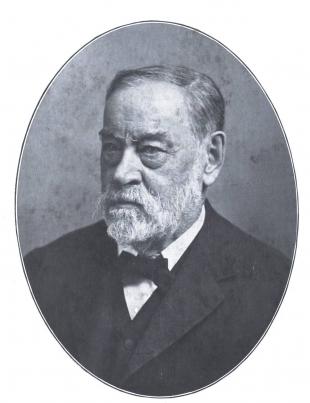
William Ford Robinson Stanley was a British inventor with 78 patents filed in both the United Kingdom and the United States of America. He was an engineer who designed and made precision drawing and mathematical instruments, as well as surveying instruments and telescopes, manufactured by his company "William Ford Stanley and Co. Ltd."

The United States provided many inventions in the time from the Colonial Period to the Gilded Age, which were achieved by inventors who were either native-born or naturalized citizens of the United States. Copyright protection secures a person's right to his or her first-to-invent claim of the original invention in question, highlighted in Article I, Section 8, Clause 8 of the United States Constitution, which gives the following enumerated power to the United States Congress:
To promote the Progress of Science and useful Arts, by securing for limited Times to Authors and Inventors the exclusive Right to their respective Writings and Discoveries.
The Battle of Gloucester Point, Virginia was the first reported exchange of fire in the American Civil War, following the surrender of Fort Sumter. As Lincoln extended the Union blockade to include Virginia, the rebels tried to deny Union access to the local estuaries. On May 7, 1861, Lieutenant Thomas O. Selfridge Jr. commanding the USS Yankee was ordered to reconnoitre the new fortifications at Gloucester Point opposite Yorktown. Shots were exchanged, causing no casualties, Selfridge claiming that his guns were too small to damage the battery, commanded by Lieutenant John Thompson Brown, credited with firing the first cannon shot of the war in Virginia.
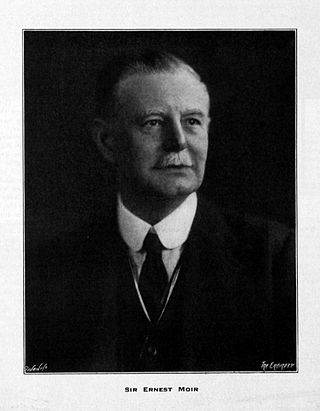
Sir Ernest William Moir was a British civil engineer and the first Moir baronet. He is credited with inventing the first medical airlock while working on the Hudson River Tunnel in New York in 1889.
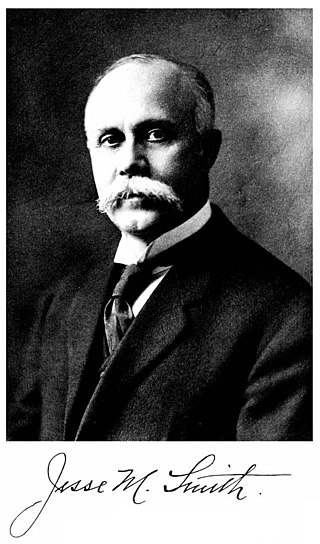
Jesse Merrick Smith was a prominent American mechanical engineer, consulting engineer, patent expert, and president of the American Society of Mechanical Engineers in the year 1909-10.

James Ross Carpenter was a Wyoming politician and inventor who served in the Wyoming Senate as a member of the Democratic Party. Prior to his political career he helped in the founding and advertisement of multiple towns in Wyoming.
References
- ↑ United States. Patent Office (1883). American Architect and Architecture, Volume 13. Boston: J. R. Osgood & Company, 1883. p. 11. Limited Preview, Google Books , accessed October 30, 2012.
- ↑ United States. Patent Office (1887). Official gazette of the United States Patent Office, Volume 39, Issues 1-4. Washington: Government Printing Office, 1887. p. 252. Limited Preview, Google Books , accessed October 30, 2012.
- ↑ J.H. Beers & Co (1897). Commemorative biographical record of Dutchess County, New York. Chicago: J. H. Beers & Co., 1897. p. 258. Archived from the original on 2019-07-06. Retrieved 2013-08-13., retrieved October 30, 2012.